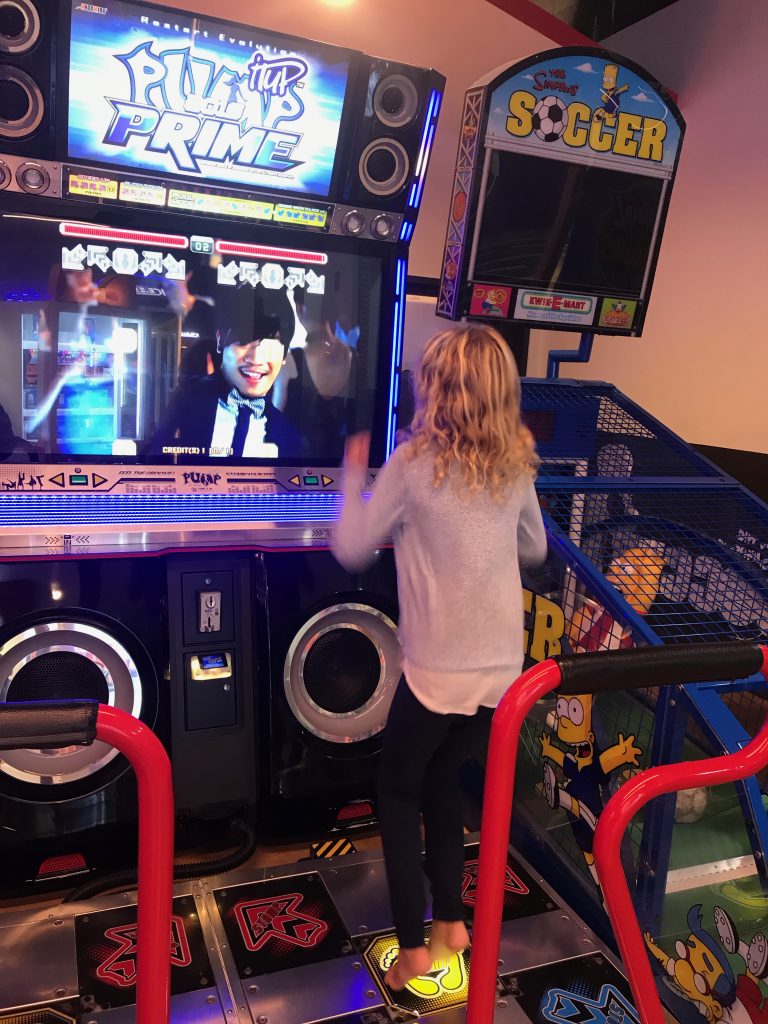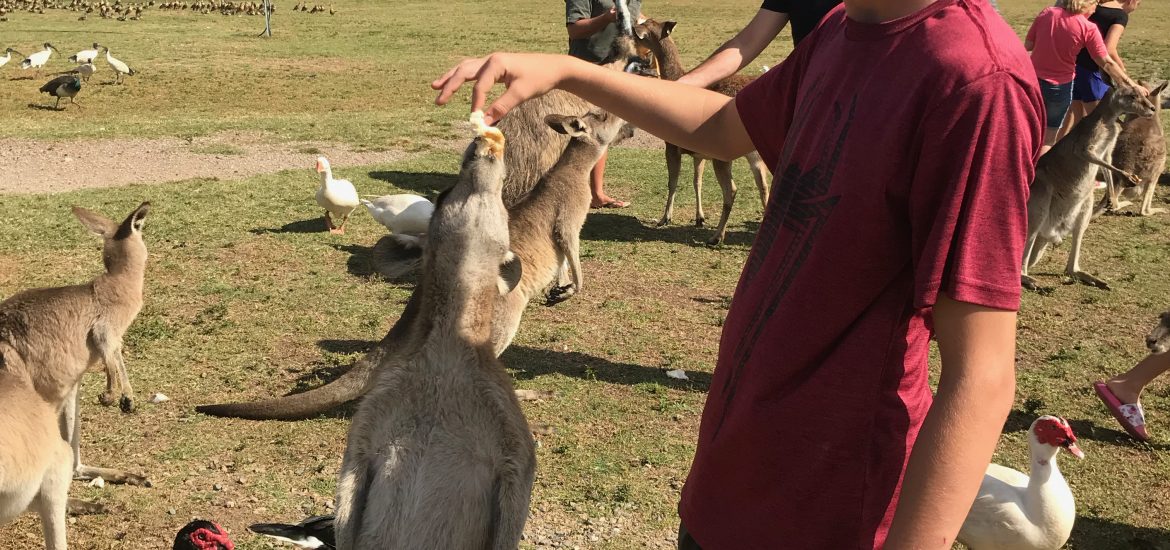We are in Australia! For some reason, this feels like an accomplishment. I keep telling the kids, “Now you can say you’ve sailed to Australia!” They are underwhelmed. I think they figure they can tell people they’ve sailed to any of the places we have been . . . and they’re right. I think it’s because I’ve read Alexander and the Horrible, Terrible, No Good, Very Bad Day so many times. Australia has this exotic connotation for me, when, in reality, it is probably the place most like home that we’ve visited.
After ten days in Mackay, soaking up civilization and the first “real” internet we’ve experienced, we left to make the long trip up the east coast to Darwin. We are traveling inside the Great Barrier Reef for most of our journey which means we have some protection from the open ocean and therefore, reduced seas. The sailing here has been some of the best we’ve had on the trip, mainly because the wind is consistent and from the right direction at the right speed and the sea state (so far) has been quite calm. Added to that are delightful, if slightly cool, weather conditions, and gorgeous scenery.
By cool, I mean that we had to go shopping for long-sleeve shirts and pants for the kids because they have outgrown anything we brought along. I have been wearing multiple layers in bed at night and we have all our blankets out and occasionally squabble over them. It is winter here but it will be short-lived for us as Darwin has temperatures in the 90s even at this time of year. Still, it’s a nice change to be chasing beams of sunshine around the boat instead of avoiding them.
After arriving in Mackay after a fast and uneventful passage with the Hunsinger clan, we pulled up to the fuel dock in the late afternoon and learned we would have to wait until the next morning to clear Customs and Immigration. Sure enough, at 7:30 on the dot, I heard some commotion and jumped into my clothes. Joe stuck his head below and said that everyone needed to get off the boat. I went to wake the girls as Joe urged me to hurry, saying there were 15 people waiting on the dock. Sure enough, as we groggily stepped into the cold morning, a small army of uniformed officials and one dog stood there waiting for us to get off the boat so they could start their inspections.
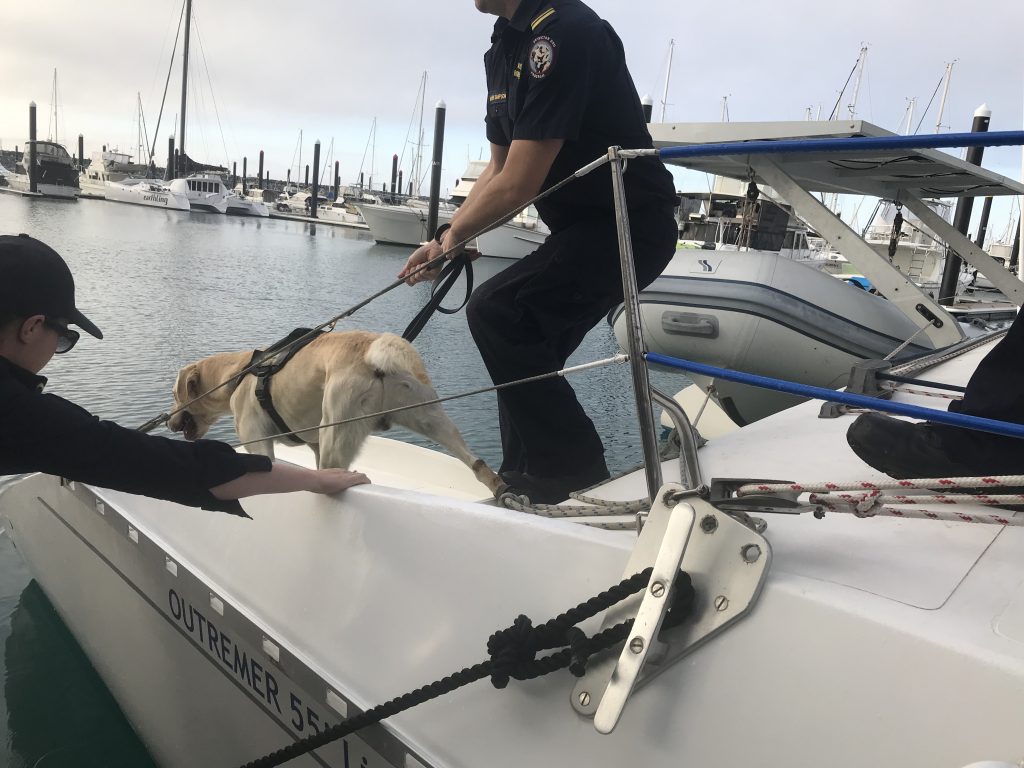
Australia is notorious for being very particular about what comes into their country and rightfully so. They have highly developed agriculture and, based on what their friendly and professional inspectors told us, have so far avoided the pests and problems that have plagued other countries. Because of this, the biosecurity team went through our food stores item by item, looking for signs of creatures they don’t want in their country. We had already eaten or disposed of all of our produce, dairy, and meat that wasn’t labeled by country of origin. They confiscated all of our frozen minced beef from Fiji, telling us that current regulations (which change frequently) only allow meat from New Zealand to enter the country.
After the drug dog had sniffed and other officials (Customs?) had gone through our medicine cabinets and looked for restricted or forbidden items, we were allowed back on board to do our immigration paperwork. Then the biosecurity team came on board.

The very kind female inspector that was going through my spices and dry goods showed me how to identify signs of insects by looking at the bottom of packages for dust that indicates that insects are inside the package, eating away. She said they especially like nuts and, sure enough, in my open bag of pecans, we could see a larger than normal quantity of debris at the bottom. Inside the spice canisters we found evidence of insects as well. I had noticed this “webbing” before and had thrown some spices away but didn’t know why. The whole experience was very educational and I believe the inspection and subsequent purge helped me come within 10% of eradicating a colony of moths we inherited somewhere along the way. They don’t do anything much other than flutter tauntingly around until we kill them (I’m usually more of a catch and release person but I’m trying to stop the life cycle) but they do leave unpleasant smudges and bother me because I don’t know what food source they are destroying. (NOTE: Since first writing this, I discovered two boxes of unopened couscous with moth webbing inside. They must have been packed inside!)
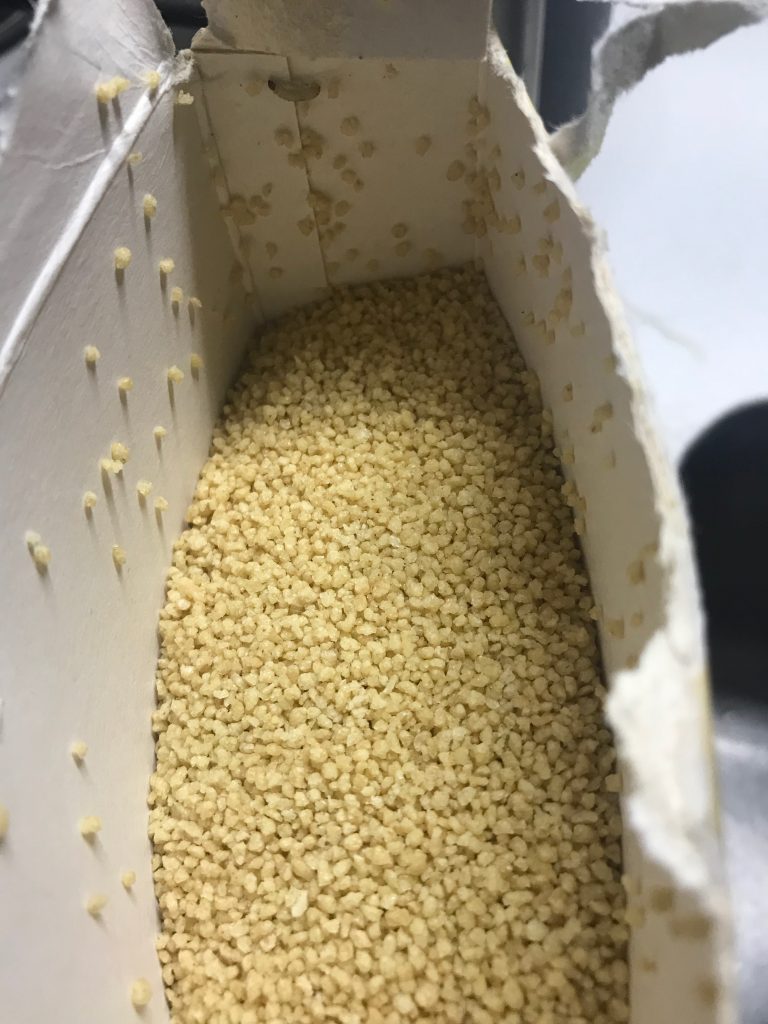
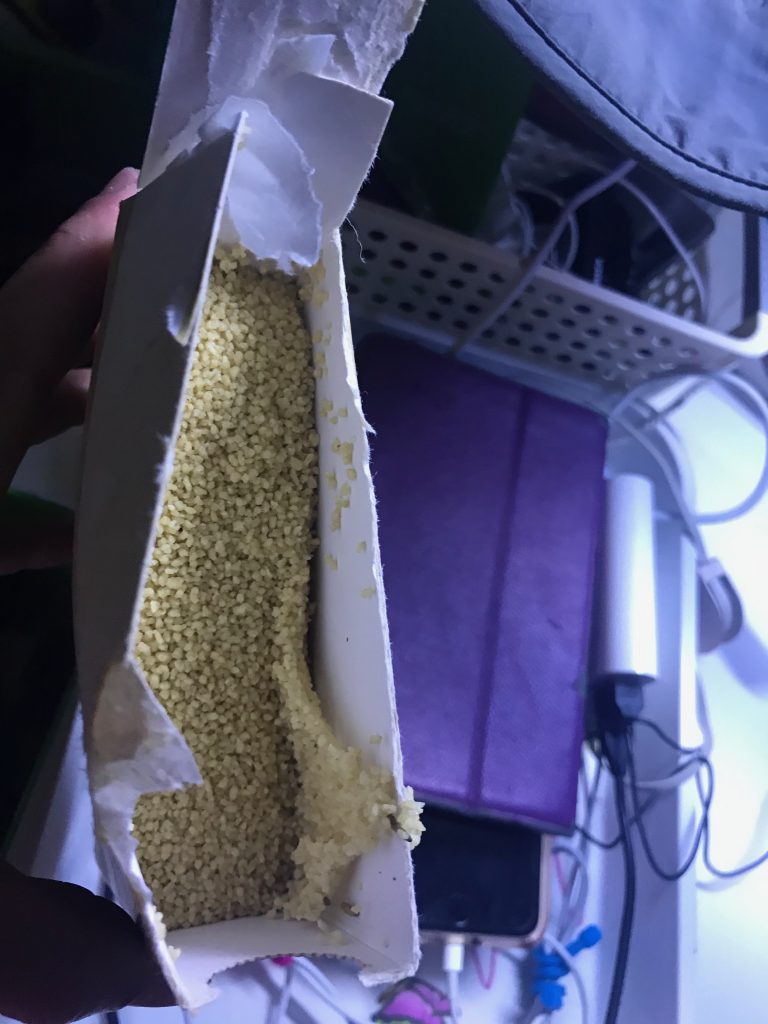
Meanwhile, the male inspector was rummaging through our other possessions, asking if we had any souvenirs made from plant material. He took my bags made from woven plant leaves and shook them out onto a cloth he laid on a table. I was certain he would find nothing but, as in other past certainties of mine in areas of which I know nothing, I was wrong. When he turned the bags upside down, several minuscule insects dropped onto the cloth and started running around. He herded them with his pencil while I called the kids to come see them. The inspector called them something that meant that they are common to all urban areas (social bugs, urban insects ? can’t remember) and said they weren’t a concern of his. I could keep the bags although he recommended putting the bags in a black garbage bag in the sun to kill their occupants.
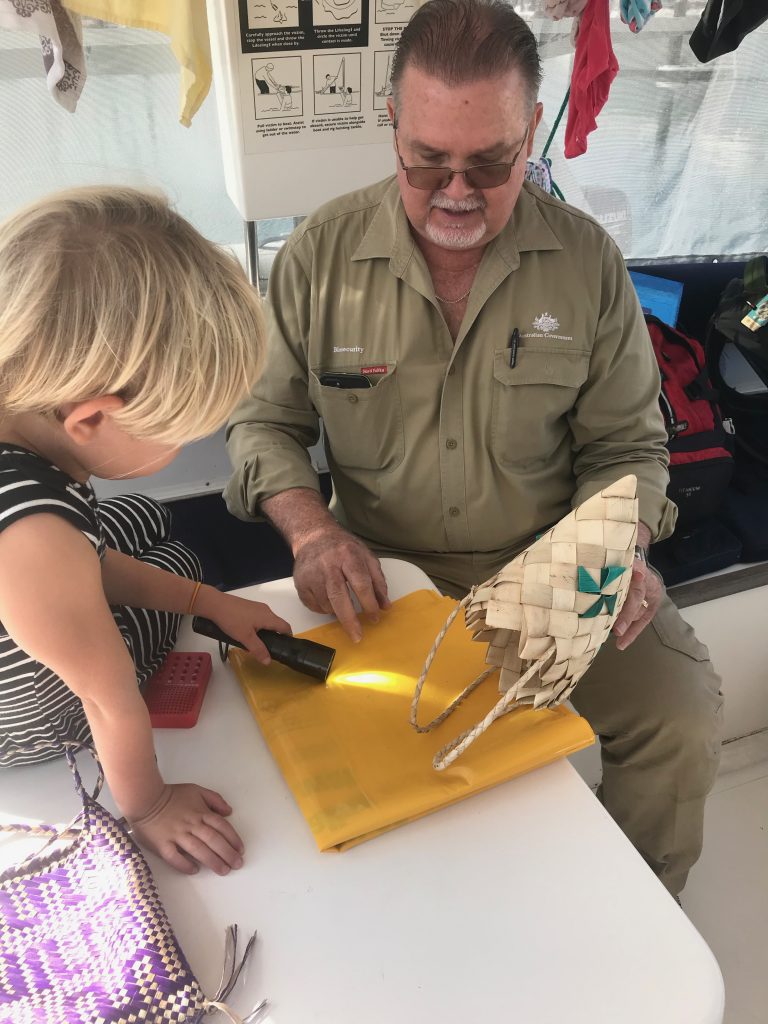
After a couple of hours of having Charm’s contents poked and prodded, we were on our way to the dock. We received long-awaited word from the boatyard that we could have Charm pulled out of the water the next morning. All five kids and three adults (us plus Steve, Morgan, and Mason) did a thorough scrubbing inside and out, with the kids trekking off to do several loads of laundry at the marina laundromat. I found a place with apartments for both families and we packed up and moved out late that afternoon.
Charm went to the boatyard the next morning where she got the boat version of a spa treatment. Her bottom (including some unsightly coral scratches) got power washed, sanded, and repainted with anti-fouling paint (used to discourage growth on the hull), and her propellers were polished to a lovely gleam. Joe spent almost every day in the boatyard, supervising and spearheading other projects including (Joe read this one night and refined my listJ):

- Removing the mast to find out why it was wiggling (answer – Base didn’t fit correctly)
- SSB troubleshooting (it has never worked well)
- Rudder reseating (Joe and John did a temporary fix of the issue in the Marquesas but a long-term fix was needed)
- Repair of the bowsprit
- Electrical issues related to auto-pilot and SSB
- Cosmetic repairs to fiberglass and gelcoat
- New Cutlass bearings
- Rebuild of the water maker electric motor
- Installation of a new wind sensor on top of the mast
- Repair of two padeyes that were wearing for the gennaker and spinnaker halyards so sail didn’t fall into the Indian Ocean
- Fiberglass work on the skegs, daggerboards and rudders to fix cracks and dings below the waterline
- Installation of a new (and surprisingly expensive) roller furler for the jib since the old one was on its last leg
The kids and I enjoyed our apartment time and did some shopping and sightseeing with Steve, Morgan, and Mason. I will tell of those adventures in another post. Also, in a special “Bitter rage” post, you can read about . . . insurance. Yay.
